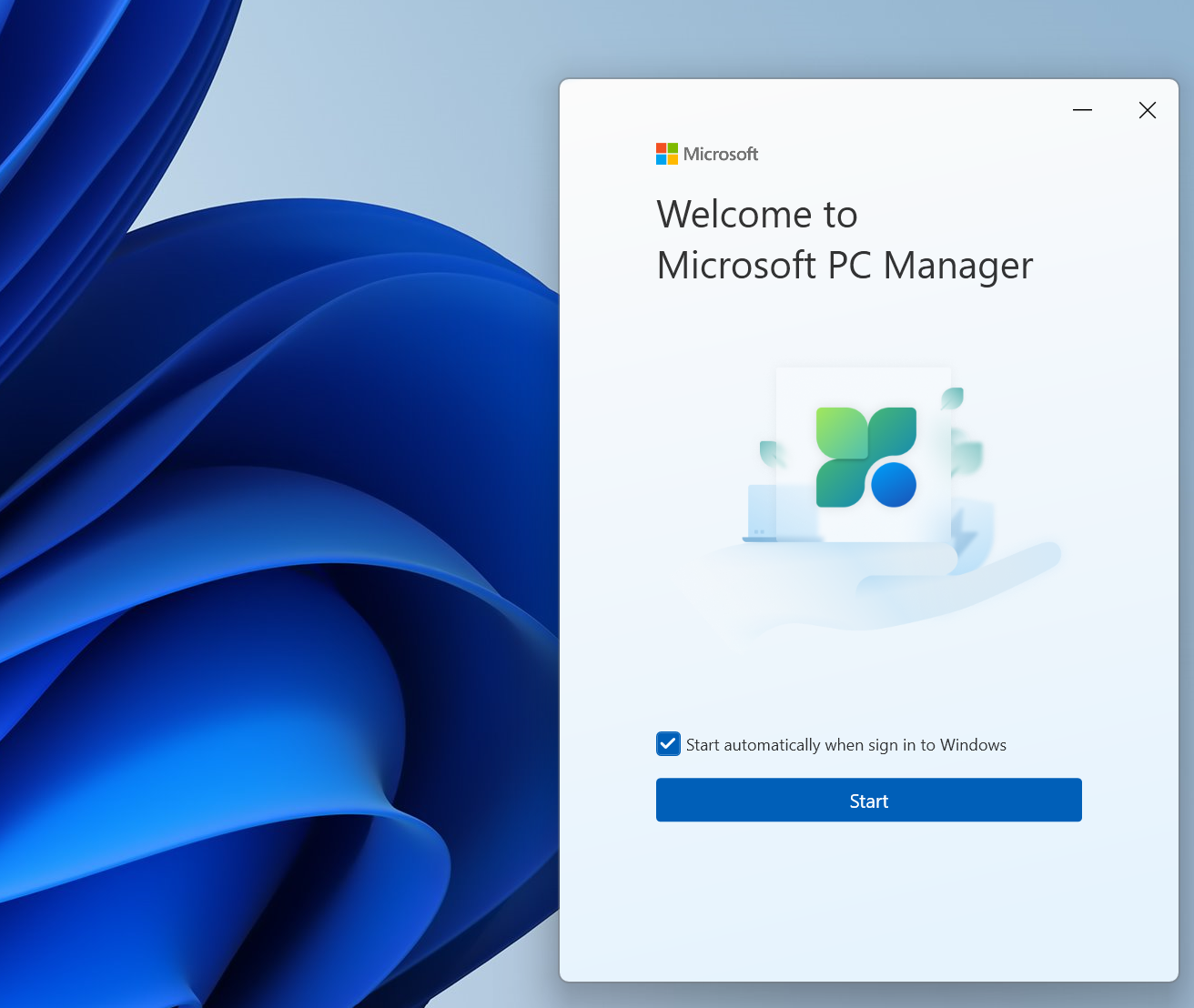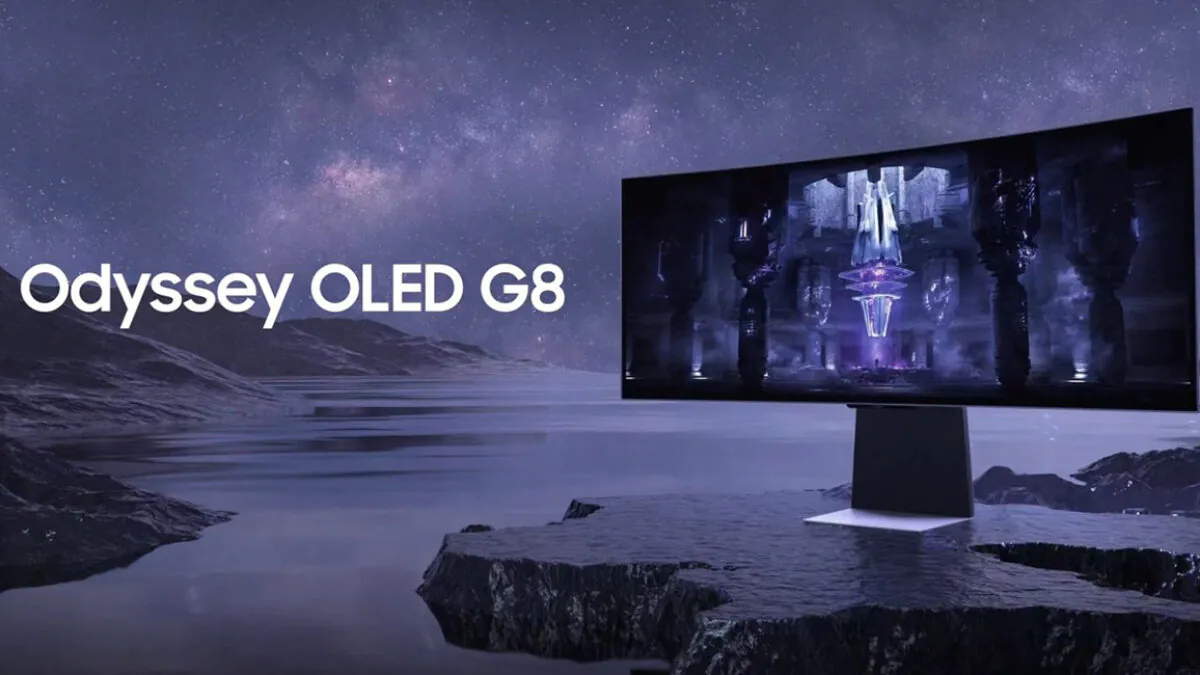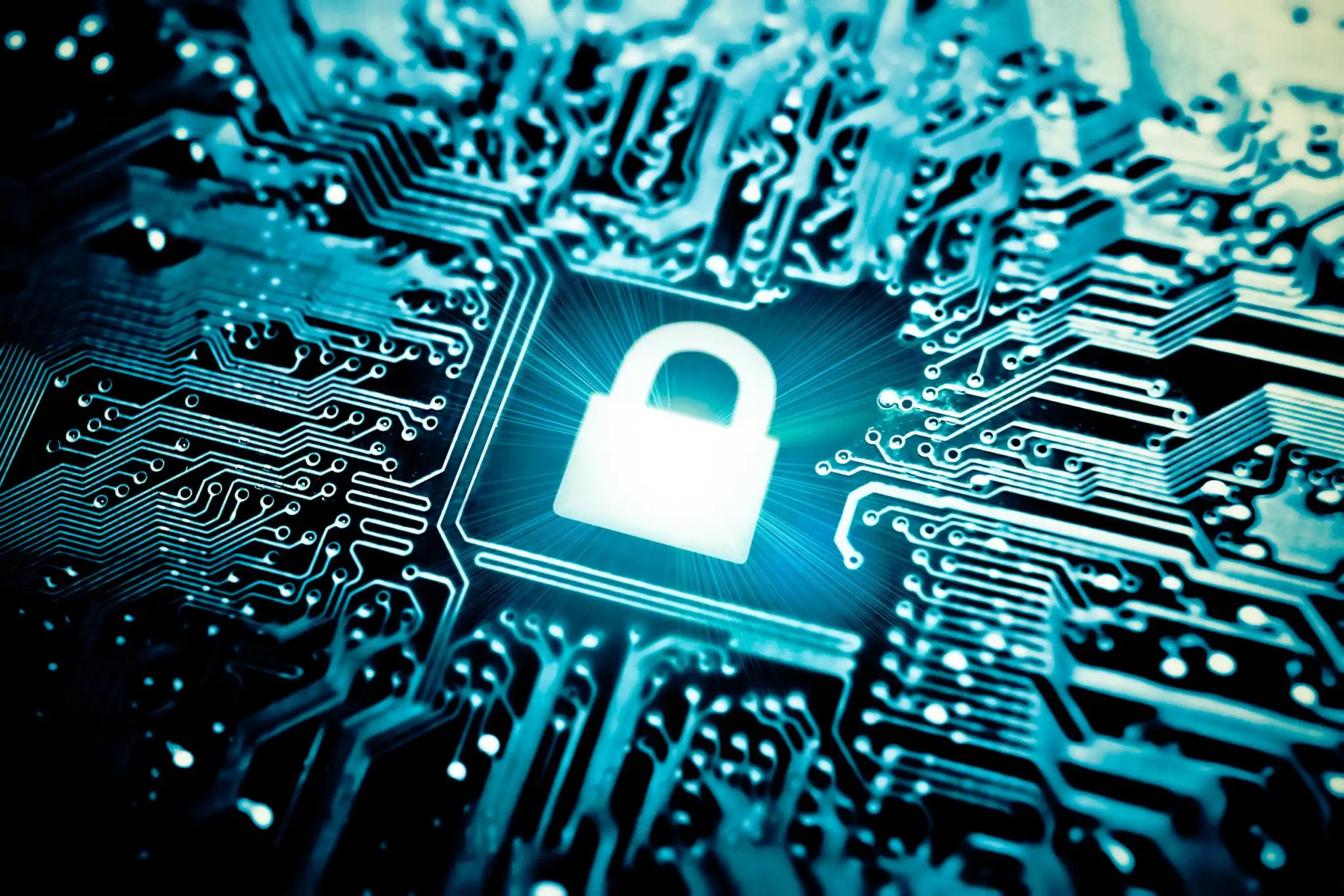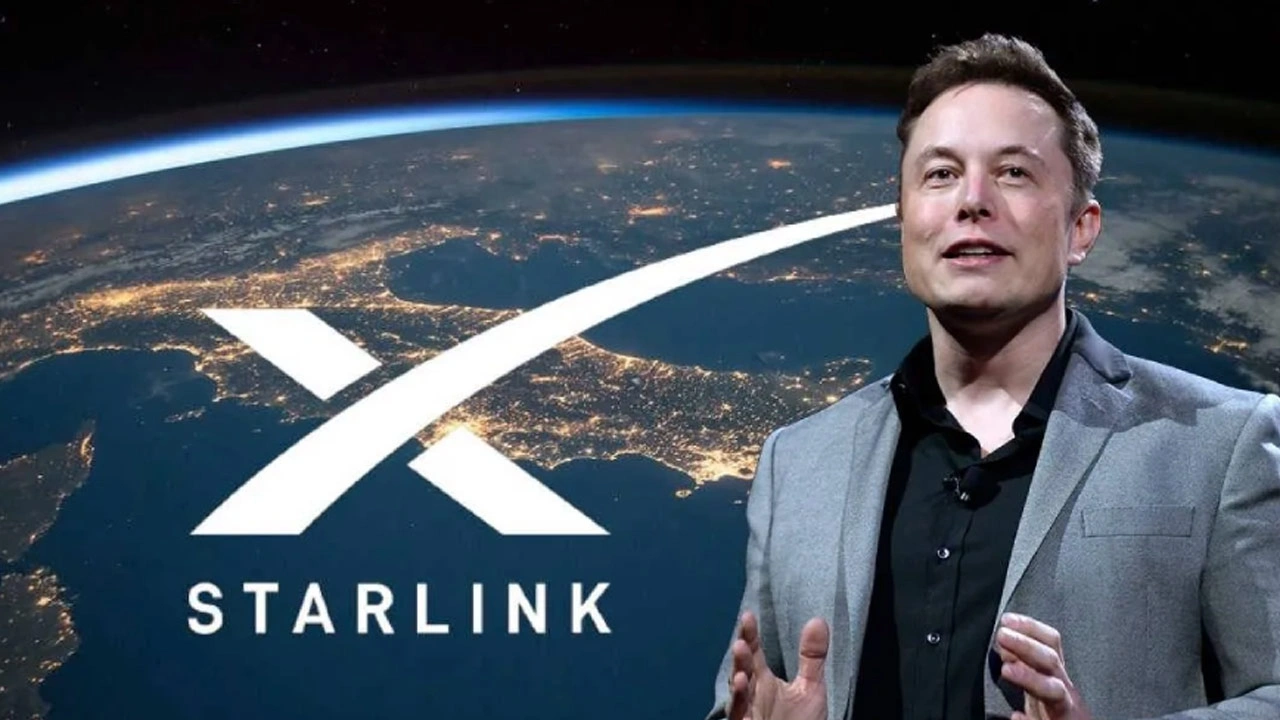Microsoft’s answer to CCleaner has evolved into a helpful collection of tools.
Microsoft PC Manager helps tidy up the inevitable clutter that clogs PCs: remnants of old updates, downloads, big ZIP files that you downloaded, unpacked, and forgot about. But it’s now a general tuneup app that can help you do all sorts of things — even put a secondary toolbar on your desktop with shortcuts.
It’s fair to say that this app has flown under the radar: PC Manager debuted as a Chinese-language beta in 2022, and emerged last year on the Microsoft Store. Now, it’s a full-fledged, thoughtful utility with quite a lot under the hood. We’ll walk you through what it can do for you.
Naturally, any mention of PC Manager has to also mention CCleaner, the popular cleanup tool that became much less beloved after Avast bought it in 2017 and then accidentally bundled a Trojan-horse malware file inside of it. Now, Microsoft has stepped in. PC Manager reminds me a bit of PowerToys — Microsoft’s toolbox of helpful utilities — and a bit of Microsoft’s Game Bar app, too.
The easiest way to download PC Manager is via the Microsoft Store, which immediately downloads it on to your PC. It will ask for your permission to load itself when you boot your PC.
PC Manager: What can it do?
PC Manager consists of five different functions: The Home screen provides shortcuts to information and utilities that can improve the performance of your PC. On the left-hand rail are four other deeper dives into various functions: Protection, which taps Windows Defender and Windows Update; Storage, which offers deep cleaning for your hard drive or SSD; Apps, which looks at which apps run at startup; and a Toolbox of utilities.
The weirdest thing about PC Manager — which is on version 3.3, as of press time — is that the entire user interface is smooshed into a thin wedge of your screen, with no option to enlarge it. That compresses quite a lot of information in a small area; it would be nice to be able to adjust it.
The Home screen is essentially a dashboard, mostly likely offering to give your PC a “health check” and providing insight as to what’s going on with your PC. A big “Boost” button encourages you to boost your PC’s performance.
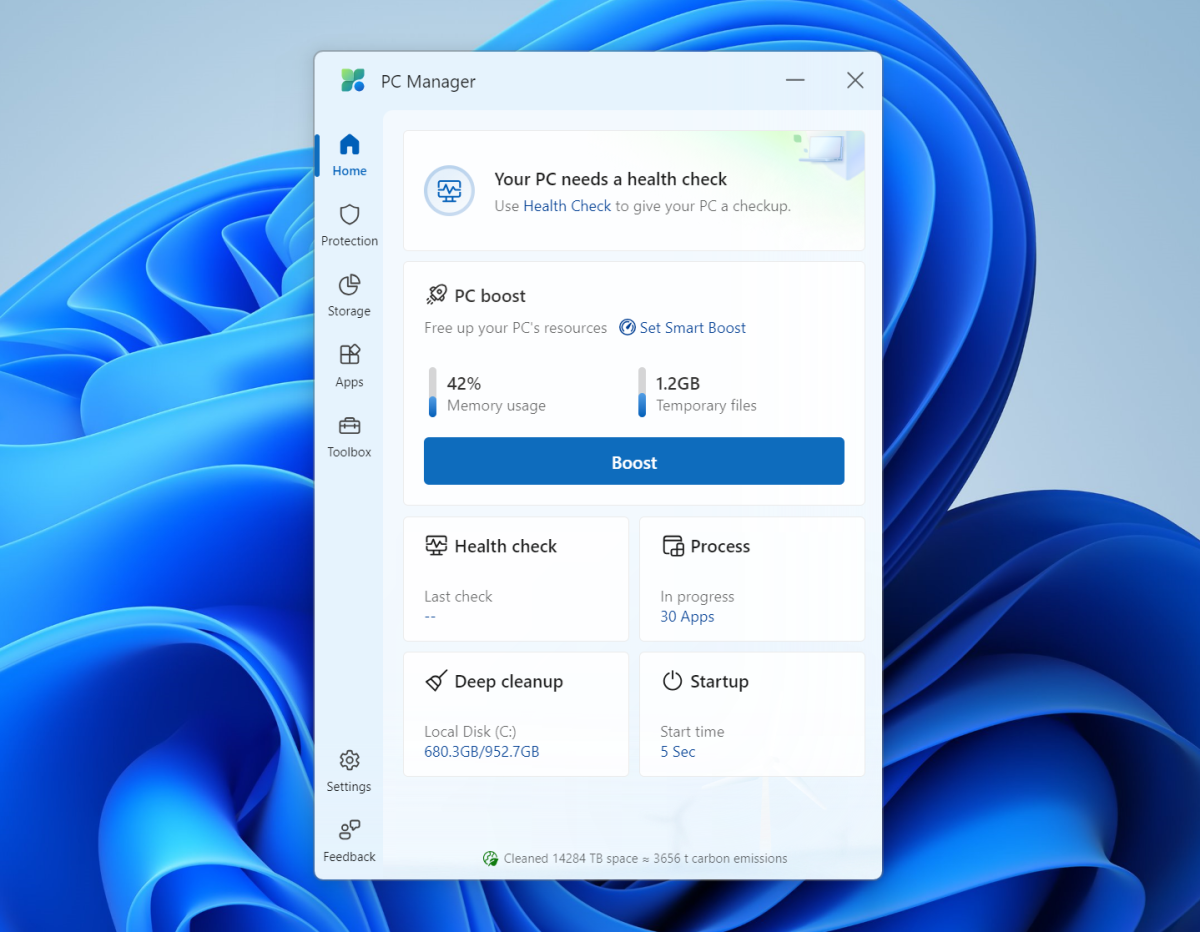
Mark Hachman / IDG
Choosing the “Health Check” option allows PC Manager to quickly identify files that Microsoft deems worthy to delete: your Windows cache, your browser cache (presumably Edge, though this isn’t stated), temporary files, and so on. It doesn’t really do anything else, at least on the surface.
Microsoft doesn’t really tell you why you should delete these files, merely assuming that you’ll want the extra space back. On my PC, the 1.2GB that PC Manager offered to delete didn’t seem worth it in terms of space saving, based upon the hundreds of gigabytes of space my SSD allowed. But it quickly deleted these “junk” files.

Mark Hachman / IDG
The PC Boost section offers a “Smart Boost” that will kick in when there is “high usage” of RAM or more than 1GB of temporary files. It’s off by default.
PC Boost looks like it simply eliminates some temporary files, which on my PC took just a couple of seconds. My memory usage shrank by a few percentage points, but that’s it. However, it might be more effective if you’re the type of person with a lot of random utilities, or who oversees a child’s PC who can’t say no to downloading things.

Mark Hachman / IDG
Other components just give you a quick, easy-to-find look at some of the elements of your PC. For example, the “startup apps” button reveals what apps load when you boot your PC. (You can still access these via the Windows Settings menu — but again, “quick” is the watchword here.) Disabling them will speed up your PC’s boost time, though perhaps at the cost of performing background updates behind the scenes.
The “Deep Clean” option is another tool that’s replicated elsewhere, as part of the Storage Sense tool within Windows. Again, Microsoft makes recommendations for files that you can safely delete, erring on the conservative side. It even dives into the caches for various browsers and applications, like Photoshop or Mozilla Firefox.
Trending for you

- Best laptops 2024: Premium laptops, budget laptops, 2-in-1s, and more
- Best VPN services 2024: Top picks for speed, price, privacy, and more
- Best Windows backup software 2024: Protect your data!
It’s possible that Microsoft would offer to delete files in my Recycle Bin if I had less storage on my PC, but it didn’t do so this time.
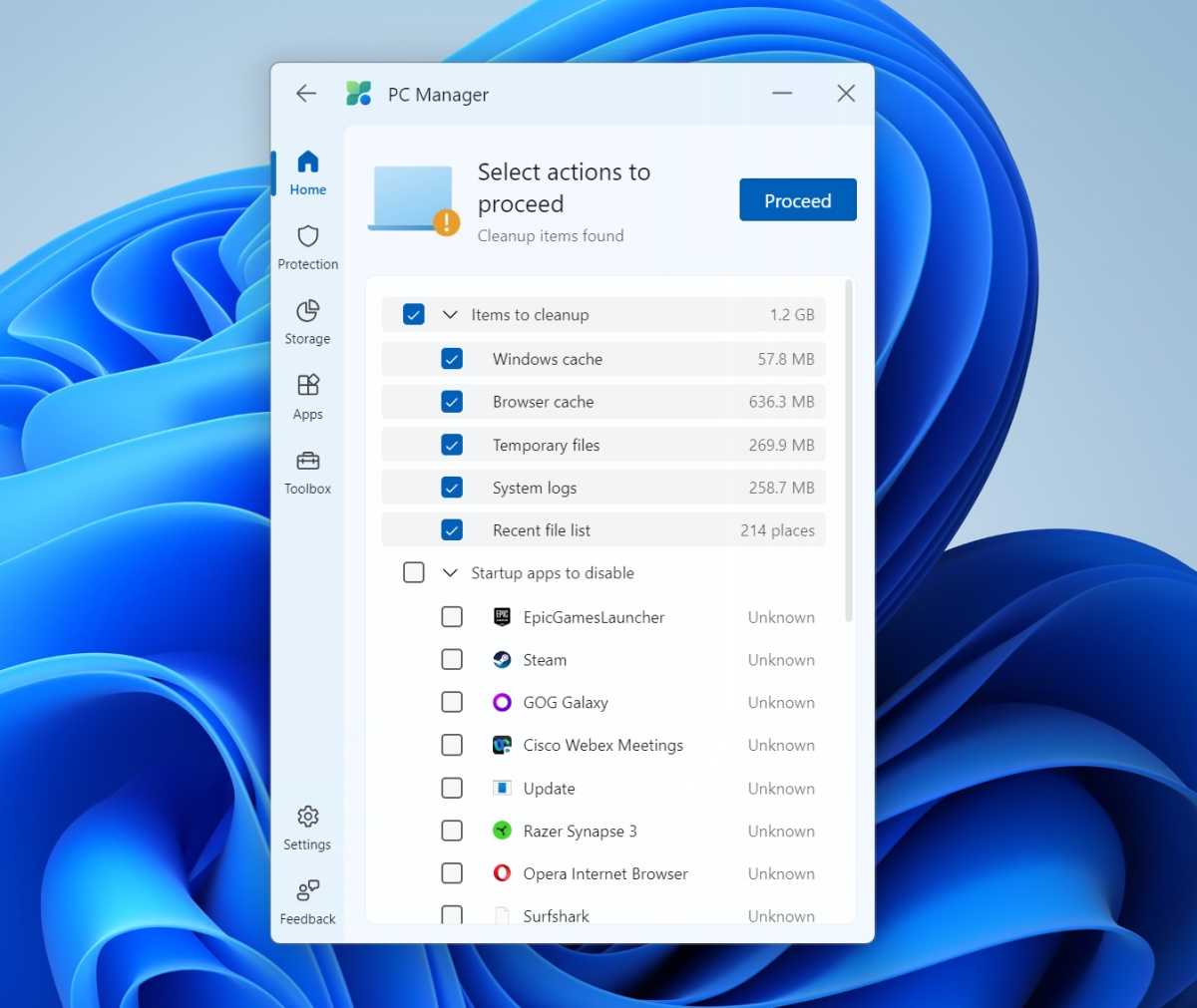
Mark Hachman / IDG
Speaking of storage, though: Make sure you check out the Storage tab on the left-hand rail. Here, you’ll find links to Storage Sense, your PC’s cleanup tool, but also a nifty option to “Manage large files.”
This allows you to search your hard drive or SSD for files that are larger than 1GB, say. It also allows you to search by file type. The message here is that maybe you have an old game file, or a LLM parameters file, or an old ZIP download — whatever. By identifying those, you might be able to regain some storage space in large chunks.
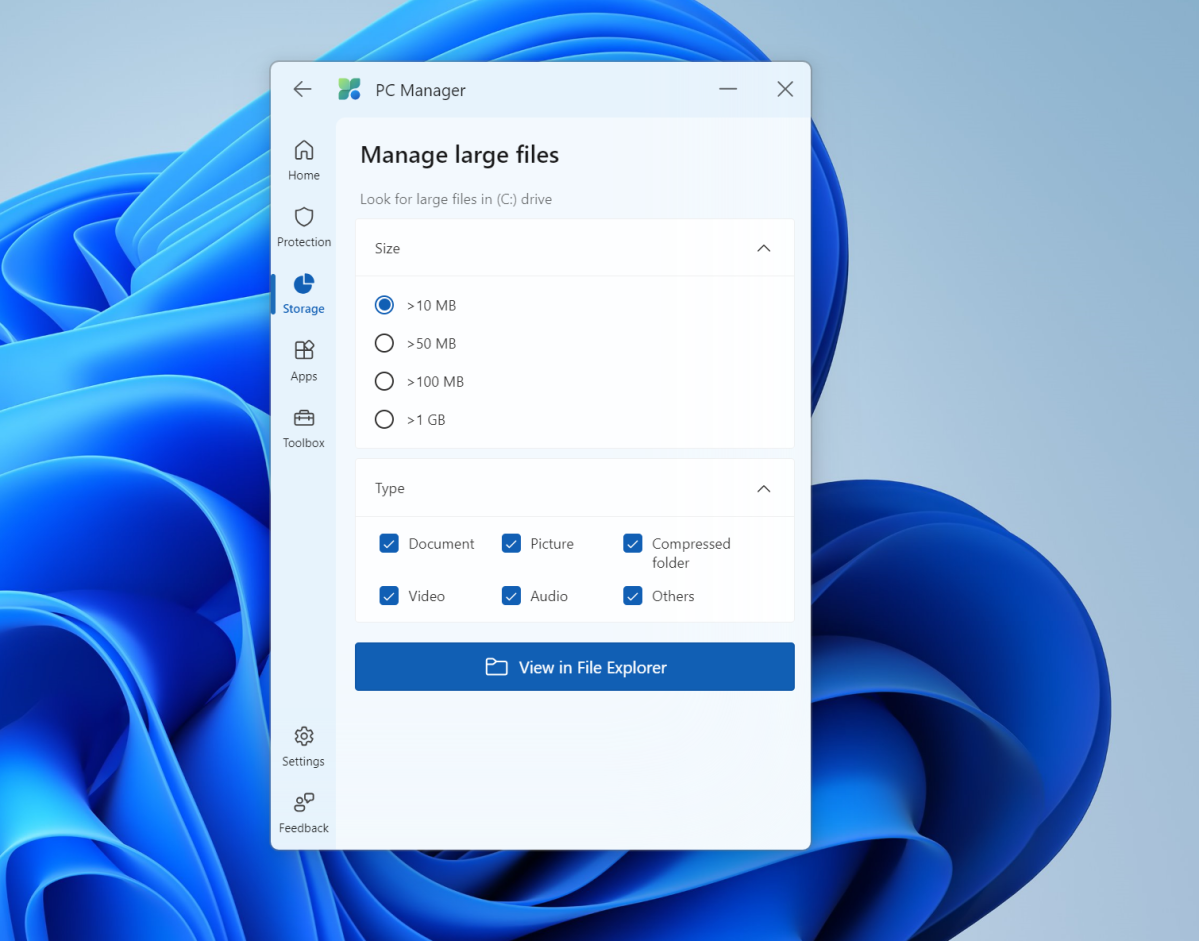
Mark Hachman / IDG
The “System Protection” option is another example of collecting functions that are elsewhere on your PC, like Windows Security and Windows Update. Interestingly, clicking the Windows Update section doesn’t take you to Windows Update at all — it just provides a list of available updates, and asks whether you want to install them.
There are also a couple of features that aren’t obvious: “Taskbar repair,” which apparently repairs your taskbar, and pop-up management, which “blocks pop-up windows in apps.” It’s not clear whether this is a traditional pop-up blocker, like in a browser, or whether this would block the Windows “ads” for features, which can sometimes appear in your Start menu.
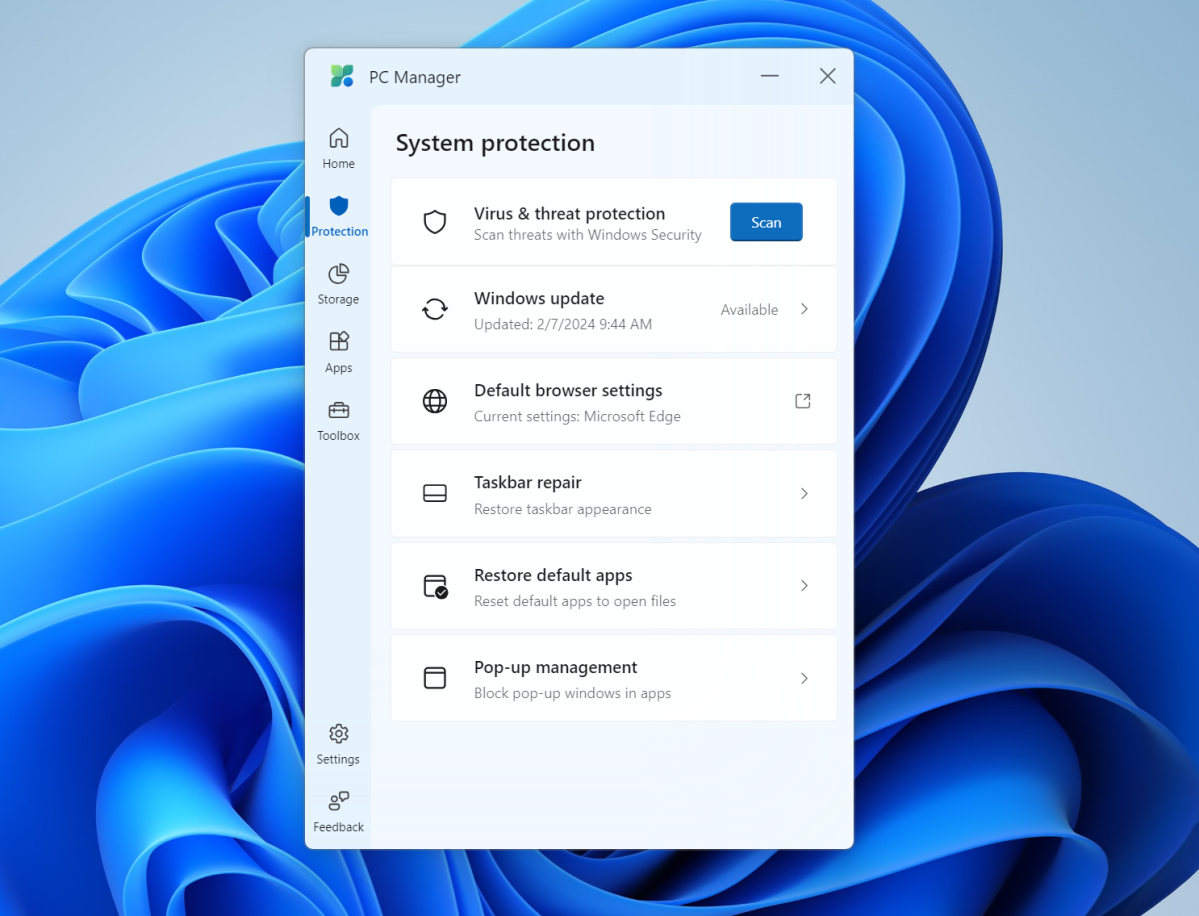
Mark Hachman / IDG
Under the Apps section, you’ll find some tools to tell which processes are currently running (Task Manager, basically) and another way to manage your startup apps. The interesting thing here is that Windows actually tracks your startup time — mine was five seconds. There are shortcuts to the Windows Settings “Apps” page as well as the Microsoft Store.
The Toolbox section is the last, and it hides something interesting: a floating utilities toolbar.
The menu itself groups together various functions that Windows includes, but might be hidden inside apps or behind forgettable keyboard shortcuts: Sound Recorder, the Snipping Tool, the automatic captioning of video, Notepad, and Calculator. Microsoft promises to collect them all in a toolbar that lives on your desktop.
Unfortunately, that toolbar was short-lived, popping up for a second in the bottom right-hand corner of my primary display, then disappearing. (It wasn’t minimized, and I didn’t have the “block pop-up windows in apps” option on, either.) It then, however, reappeared.
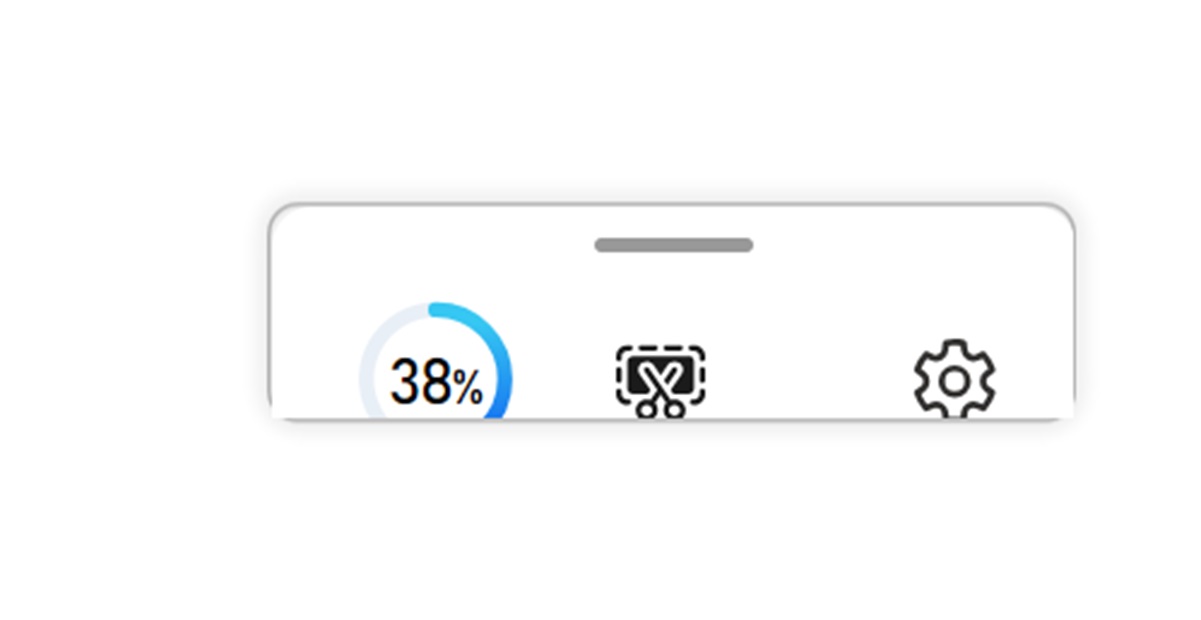
Mark Hachman / IDG
The toolbar is pretty basic, and probably needs a bit of tweaking to improve its functionality and utility. But it’s something like the floating widgets of Windows builds of old.
So is PC Manager worth keeping? I’ll leave it on my PC for a while and see how it, like PowerToys, evolves. Remember, PC Manager is there to tweak an existing Windows installation, especially as you download apps and upgrade and install patches. There will be times where you’ll want to start fresh, with what’s known as a “clean install” of the Windows operating system. That will be a much more intensive operation, but it will more effective than anything PC Manager offers.
Still, one of the more frustrating aspects of Windows is how some really solid features unfortunately become buried in the interface. If PC Manager helps expose and remind users that these features exist, we all benefit.

